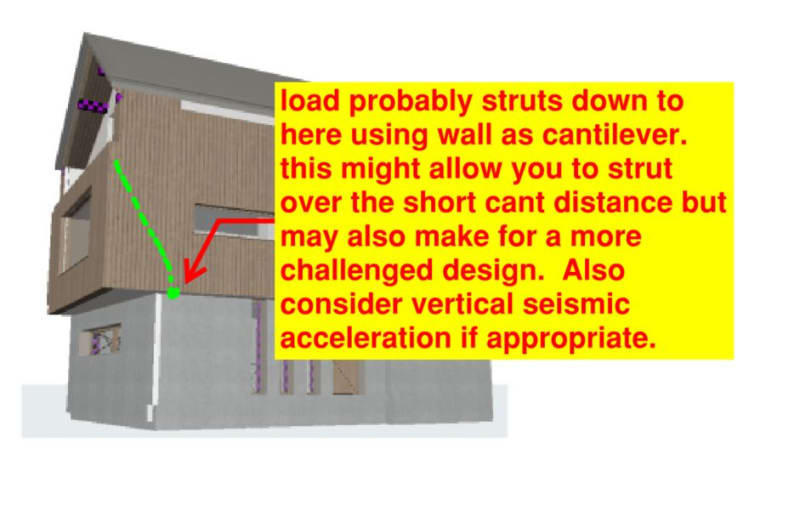Hello,
I'm dealing with the small residental building with RC slab that is 260 mm thick. The slab can't be any thicker.
The slab is heavily loaded on the cantilever part (overhangs in both directions) because the upper storey has different plan view (see 3d image of the structure), so it has loaded cantilever parts on both sides/edges of the slab.
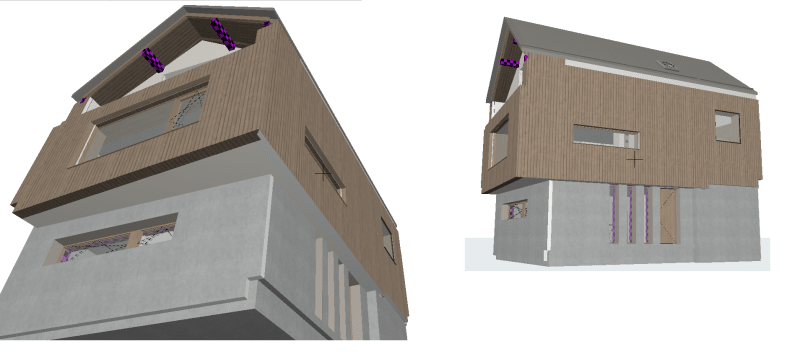
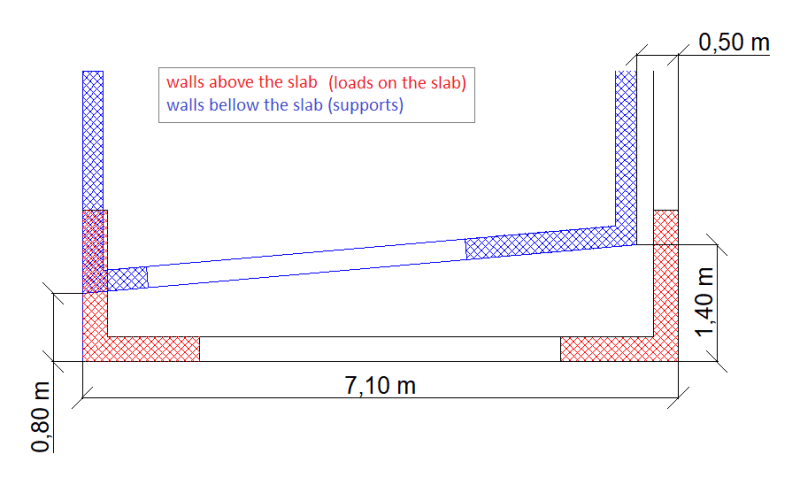
The blue line is the load from upper storey on the slab:
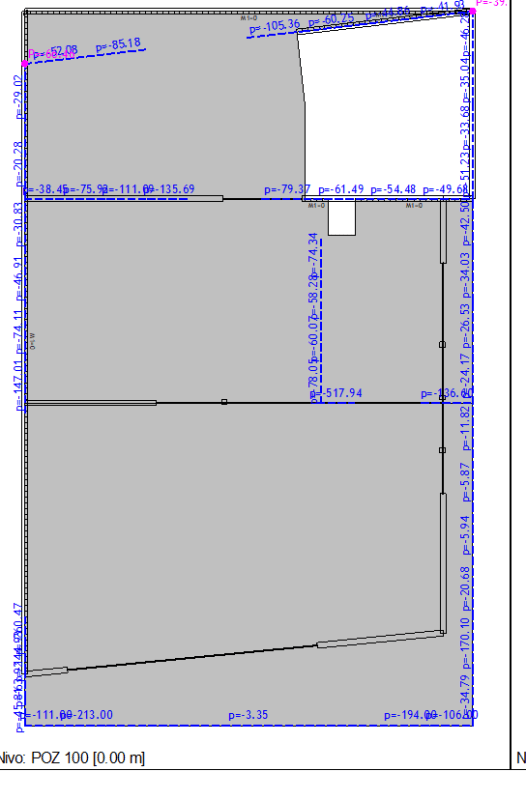
The shorter cantilever might be able to transfer loads directly to support – the wall bellow since its only 200 mm away. So it can be used as compression strut right? Is this the right approach?
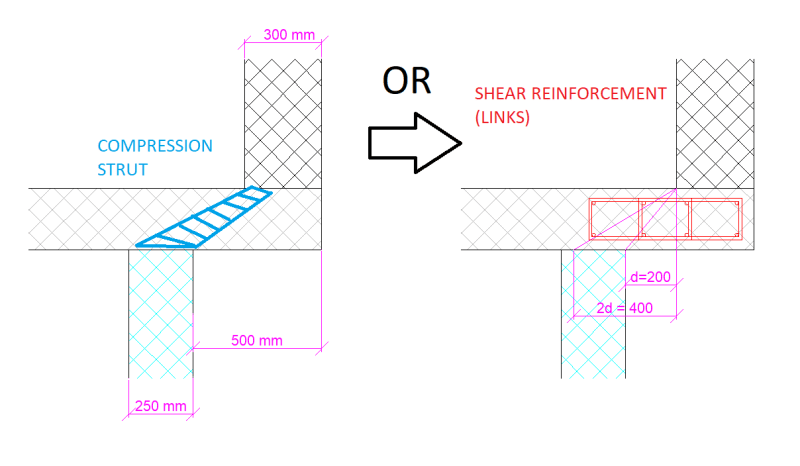
The FEM analysis shows large spikes (hot spots) of shear forces at the corner of the supporting wall as a result of both overhangs of the slab.
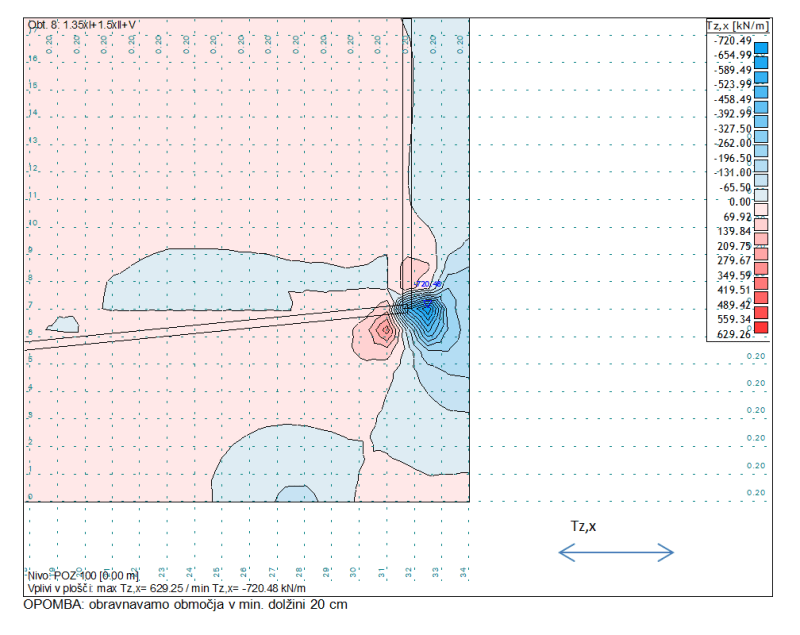
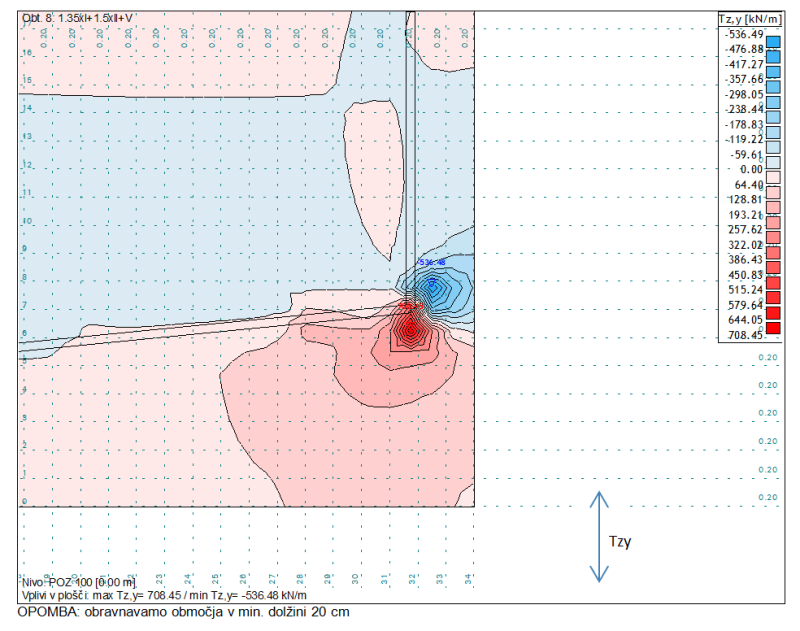
According to my calculation the shear capacity of the slab is around 140 kN/m which means I need a shear reinforcement. How would you reinforce this slab – any suggestion?
I'm aware of the shear perimeters around the corners but my shear forces are kinda large and perimeter is small.
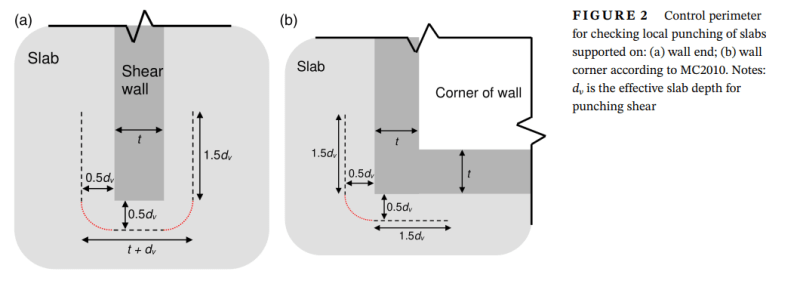
The Eurocodes (EC2) says that shear reinforcement in the slab is allowed if the slab thickness is at least 200 mm.
I was thinking about using shear links or bent bars. What is the largest bar diameter for such links?
Are the links even a good idea in slab that is only 260 mm thick?
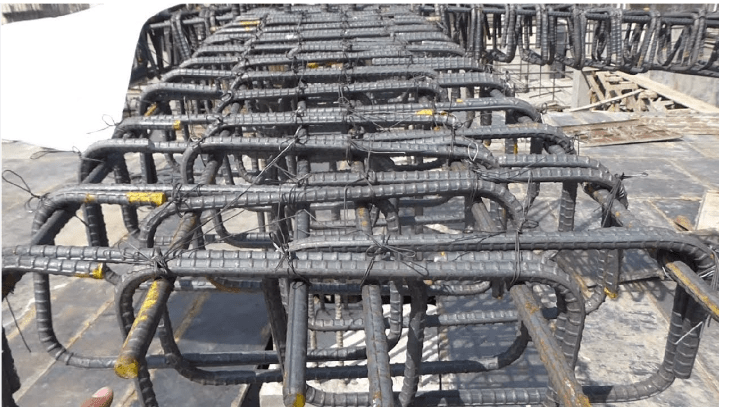
I'm dealing with the small residental building with RC slab that is 260 mm thick. The slab can't be any thicker.
The slab is heavily loaded on the cantilever part (overhangs in both directions) because the upper storey has different plan view (see 3d image of the structure), so it has loaded cantilever parts on both sides/edges of the slab.


The blue line is the load from upper storey on the slab:

The shorter cantilever might be able to transfer loads directly to support – the wall bellow since its only 200 mm away. So it can be used as compression strut right? Is this the right approach?

The FEM analysis shows large spikes (hot spots) of shear forces at the corner of the supporting wall as a result of both overhangs of the slab.


According to my calculation the shear capacity of the slab is around 140 kN/m which means I need a shear reinforcement. How would you reinforce this slab – any suggestion?
I'm aware of the shear perimeters around the corners but my shear forces are kinda large and perimeter is small.

The Eurocodes (EC2) says that shear reinforcement in the slab is allowed if the slab thickness is at least 200 mm.
I was thinking about using shear links or bent bars. What is the largest bar diameter for such links?
Are the links even a good idea in slab that is only 260 mm thick?



